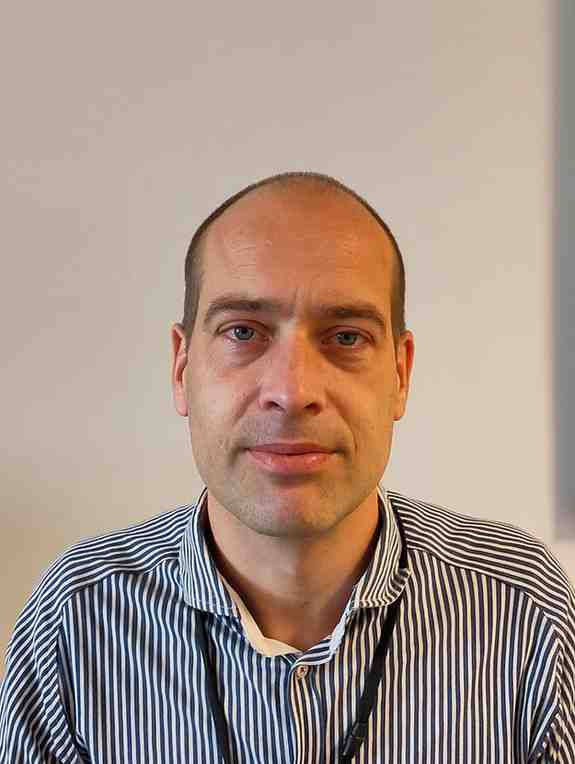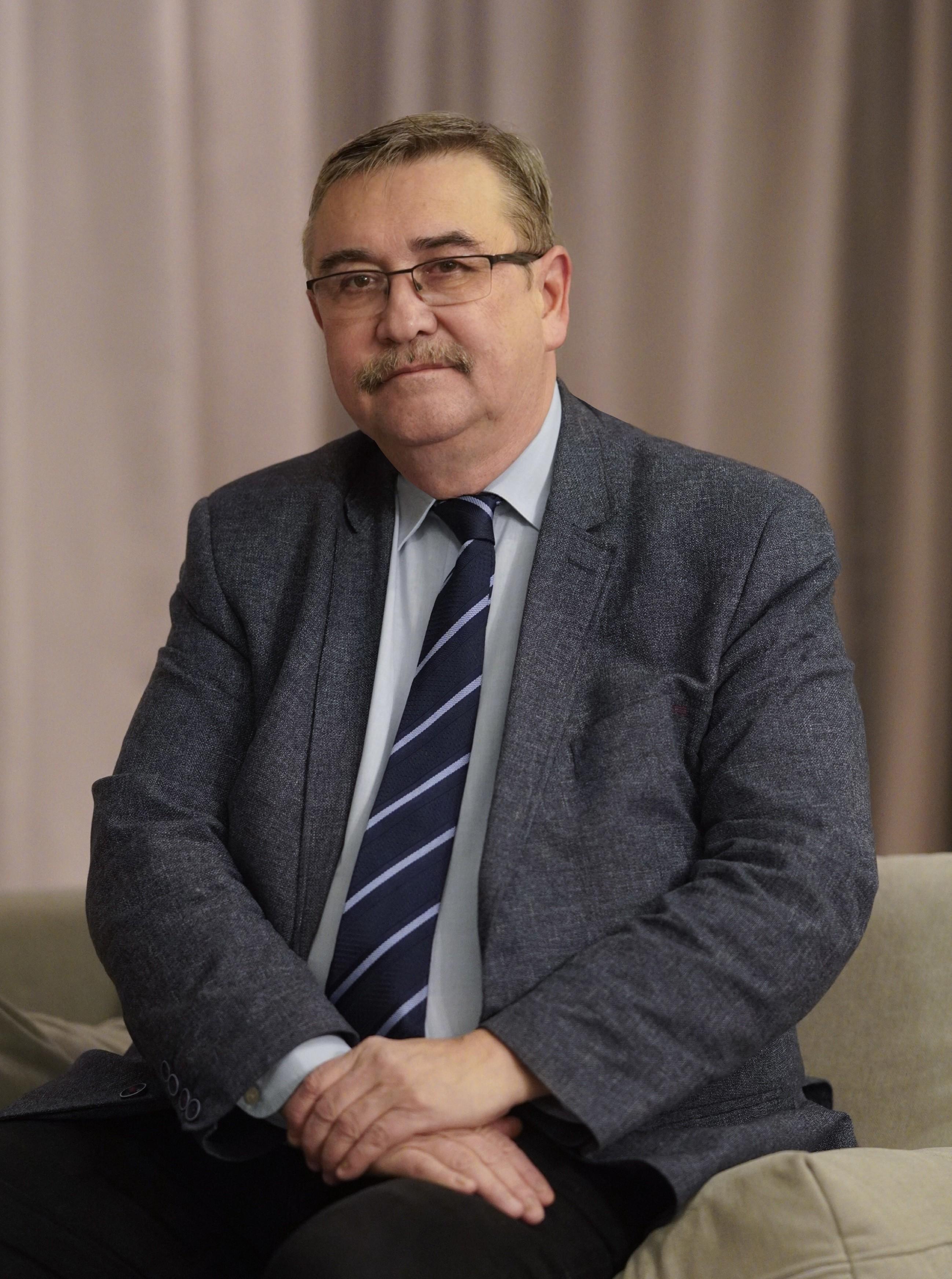AUCTORES
Globalize your Research
Review Article | DOI: https://doi.org/10.31579/2692-9406/104
1 Faculty Of Ethnology and Pedagogy in Cieszyn, University of Silesia, Poland.
2 University of Humanitas in Sosnowiec, Poland.
*Corresponding Author: Khin Phyu Pyar, Professor and Head/Senior Consultant Physician, Department of Medicine/Department of Nephrology, Defence Services Medical Academy, Defence Services General Hospital, Myanmar.
Citation: A Adamski, J Adamska. (2022). Quantum-Information Processes in Awareness Management. Biomedical Research and Clinical Reviews. 6(3); DOI: 10.31579/2692-9406/104
Copyright: © 2022 Adam Adamski, This is an open-access article distributed under the terms of the Creative Commons Attribution License, which permits unrestricted use, distribution, and reproduction in any medium, provided the original author and source are credited.
Received: 10 January 2022 | Accepted: 08 February 2022 | Published: 14 February 2022
Keywords: solitons, bioplasm; artificial consciousness; quantum information processes
Human mental life is a form of existence of information not only electromagnetic, but also acoustic, spin, soliton and bioplasm. That is, the layout the biological human in addition to the biochemical way uses the message of information using energy and information converters in living cells. The human biological system creates the pictorial structure of the world not only through sensory perception, but also on the basis of soliton, spin and bioplasm waves.
The action of solitons in the biological system of man gives the basis for seeing the psychobiological structures of man in a different light, as presented in biology, medicine and psychology. The science to date recognizes only the action of an electromagnetic wave on the sense of sight. It can be concluded that we are dealing with a second center that creates the structure of the world image and is responsible for health and the development of diseases in humans.
According to the authors, consciousness cooperates with the cosmos and is guided by the laws of quantum mechanics. Under its law, there is room for artificial consciousness. In their deliberations, the authors will understand that it is a dynamic structure of quantum-cybernetic-information team processes taking place in the bioplasm of the brain, which is in synergistic interaction with biocomputer simulation, guided by the emission of coherent light, modulated by a soliton wave.
Consciousness guides model information and determines human development
Eternal awareness means that our consciousness knows no beginning or end, there is a continuation of consciousness, and it is independent of our physical body. Eternal consciousness is connected to everything and everyone, as are the past, present, and future. He has no idea of time, passing and place. Consciousness cooperates with the cosmos and follows the laws of quantum mechanics. According to its law, consciousness may be in a specific area of space, it may not be there, or its location is indefinite. The concept of eternal awareness means that our brain probably acts as a receiver and transmitter, and not as the "producer" of our consciousness. This non-local awareness exists beyond time and space. (Adamski 2017).
Artificial awareness should meet similar criteria as human consciousness, should have a high rate of information processing in biocomputers, or quantum computers. Quantum consciousness requires the generation of the emission of coherent light cooperating with the solitons in the bioplasm and in the Bose-Einstein condensate. It requires the development of absorption of solitons from space, treatment and processing of them. Building artificial awareness will open the way to new knowledge and new educational systems, richer than artificial intelligence. In this area, there are already very interesting works on the application of artificial consciousness in robots carried out by Haikonen, (2012), (Reggia, (2013).
The development of molecular biology as well as related fields related to nanotechnologies and biotechnologies forces biology to see life in the dimension of a bioelectronic model. Information, along with mass and energy, is now considered the third basic structural element of reality. Every organized structure contains information. A characteristic feature of biological information is the transformed mass and the energy associated with it. This is a different case than is considered in physics. For a physicist, energy is a carrier of information, for a biologist, information transport is carried out on a carrier of mass and energy. Biological information combines the corpuscular features of mass transport and wave electromagnetic and acoustic features (Stonier 1990).
In this new bioelectronic approach, quantum psychology begins to emerge, showing human cognition in the aspect of quantum processes. In this psychology, it is postulated to perceive a human being in a quantum way together with an electronic personality. Its biological system is made of bioelectronic material and some biological structures are treated as natural molecular electronic devices - not only biomolecules (e.g. DNA, RNA, proteins, pigments), but also specific biological structures, e.g. cell microtubules, cytoskeleton and neurons as biological microprocessors (Hameroff, Rasmussen, 1989), and enzymes as natural transistors (Cardenas1991, p. 111), or nanocomputers (Wnuk 1995, p. 131).
These molecular electronic devices can process information, extract, store, but also use information to organize the system or keep it organized. Thus, biological and psychological life should be considered not only in terms of materials and energy, but also in terms of information. Mental effects are to depend on the transmitted information, not the amount of energy. The biochemical model explains the intricate mechanisms of mental life. He still cannot explain the transition from inanimate matter to living matter. Where is the threshold and what is its essence, what role do biochemical processes play in the coherence of the soma with consciousness and its influence on the soma and vice versa? A similar problem is with other mental processes, their nature does not fit into the biochemical model of life and is inexplicable in terms of biochemical interactions, but it is much easier to describe it in the light of quantum processes - including wave physics (Adamski 2013).
Quantum psychology aims to harmonize the relationship between man and the world of technology and science, so that his adaptation process is adapted to his development, and the ethos of life does not lose human values. The rapid development of molecular electronics, biotechnology, including biocomputers with integrated systems ("biochips") will lead to a radical change in our lives in the near future. Man will be forced to adapt to the biological requirements of computers and many electronic devices known as readers that record information in the brain. The process of teaching the school curriculum will follow a new style of teaching, where the dominant role will be played by devices supporting memorization of the material. In the new teaching system, the amount of information in the brain will double and mental development will take on a new dimension of reality, but not every psyche will easily accept this teaching style, which will repeatedly lead to many dysfunctions in the human personality. Consciousness has an anthropoic trait that has the property of co-creating the world. It was acquired by all living creatures - animals, plants, but also the entire biosphere. Nature's structure is subject not only to the strict laws of coherence and decoherence, but also organization, development opportunities and skills related to adaptation to the environment special for each species (Sedlak 1973).
Consciousness unites the Universe by means of phase relations
Light rays are not only carriers of energy, but also create signaling networks of semantic relationships. This means that the sun not only supplies energy to living creatures, but also provides instructions in which direction the metabolism should go and how the energy resources should be used (Trabka 2003).
Currently, it is assumed that the basic parameter of nature is phase changes. A phase change is the transition of one phase of a system in thermodynamic equilibrium to another phase. During the phase transition, the substance acquires a new type of structure or acquires new features characteristic of a new phase that were not present before the phase transition. The phase change is associated with a step change of one or several physical quantities, and often even with a significant change in the physical properties of the system, such as a change of the physical state, disappearance of electrical resistance, the appearance of spontaneous magnetization and many other phenomena. Such significant changes in the macroscopic properties of the system are possible due to the fact that the phase transition is determined by complex phenomena in which all the components that make up the system participate, i.e. atoms, ions, elementary particles, molecules, fields, etc. phase transitions, the interactions between all components of the system should be taken into account, which leads to major complications, but and opens up new horizons for research. In typical studies, phase transitions of the first and second kind are distinguished. The first of these are the changes in the state of matter known from everyday experience: melting, evaporation, sublimation, while the second type of phase transitions are abrupt changes in other properties of solids and liquids, without changing the state of matter. These are changes in the crystal structure, magnetic and electrical structure, viscosity, field strength, spontaneous magnetization, etc. (Gonczarek 2004).
Consciousness unites the Universe with the help of photons and solitons. The phase, as a specific space-time relationship, determines the degree of coherence and dispersion. When the phase relations disappear to zero, then the relation and kinship disappear and we say that the phase relations have disappeared and decoherence, diffusion, dispersion has begun, that is, de-phasing, during which the situation virtually disappears. During the day, light ensures the coherence of the objects of the external environment. Objects of the external environment are associated with light from different sources. The lack of light, mainly sunlight, causes the breakdown of the relationship between objects, e.g. at night. It is enough for the sun to rise and external objects are concentrated in larger agglomerations and create a meaningful whole. We get the same effect when we turn off the light in the room. In the dark, the relationship breaks down, the coherence that binds the fragments of reality into a meaningful overall picture is lost. Of course, it only happens in human consciousness (Trąbka 2003, p. 21).
The works of Adam Adamski (2006, 2016) show that Bose-Einstein bioplasm and condensate have a significant influence on phase transitions. In a Bose-Einstein condensate, quantum processes show a high order and a high degree of unity. The key feature of the Bose-Einstein condensate is that the particles that make up an ordered system not only behave as a whole, but also maintain order and there is no disturbance between the individual particles. The particles do not lose their individuality entirely. The condensate is described by a single wave function. This means that the entire object has one constant phase. The disappearance of the condensate causes the phase structure to be phased out. In this case, there is a change in the structure of the condensate. The Bose-Einstajn condensate (BE) also determines the time-space change between the micro and macro elements of the cosmos. The products of BE condensation are solitons and ex-citons (Adamski 2016).
Each biological system has soliton-generating stations that influence morphogenetic processes and are responsible for the semantic messages experienced in dreams and waking imaginations. The transmitters and receivers antennas transmit space directives to the biological system (Trąbka 2003, p. 44).
Modulating consciousness with a soliton wave
Solitons densely fill the space of the Universe and bring signals, meanings and conceptual contents from the cosmos to the human psychosphere. It happens in such a way that the emission of laser light occurs in the DNA molecules of the genetic material. Laser radiation activates ion pumps on cell membranes. Helixal bioplasmic antennas draw solitons from space into the interior of the cell, and at the same time into the bioplasm of the biological system (Adamski 2016).
The variety of soliton densities is endless. Solitons show simply incredible resistance to distortions and interfering noise (Lomdahl 1984).
When two soliton waves come closer to each other and interpenetrate each other when they are at a coherent distance from each other, they "notice" and influence each other. By distorting, they do not overlap, and then they diverge in the same order as they do. last; they just intertwine temporarily without losing their identity, however. Solitons are resistant to disturbances, they do not change shape even after a collision, except for a slight reduction in the wave amplitude (Munteanu, Donescu 2004).
The brain and any replication system of the genetic code have exposed the antennas of transmitting and transmitting receivers, space "directives". They can be passed on from one brain and passed on to another, hence it can be said that the brain is the generator and receiver of information fields. This is due to the bioplasm and Bose-Einstein condensate. Solitons are described by nonlinear differential equations. Physically, solitons are impulsive nonlinear fields and have both wave and particle properties. The most common solitons are: - in solids, in their specific forms, such as: Josephson junctions, optical fibers and quasi-one-dimensional conductors; - in liquids as surface waves or spin waves; - in plasmas as the so-called Langmuir solitons; - in linear particles; - as models in classical and quantum field theory (Bronsztejn et al. 2004).
Solitons have also been discovered in water, solar plasma, and Bose-Einstein condensate. Water solitons are noticed on rivers and seabeds, and they are conditioned by the topography of the seabed. There are also atmospheric solitons, e.g. the Morning Glory phenomenon in the Carpentaria Bay cloud. It is a lonely wave that has one crest and it travels with a uniform motion without changing speed or shape. It appears without any clouds (Roger, Rottman 2002).
According to Jibu and Yasue, Bose-Einstein condensates inside and outside the neuronal membrane may bind poorly with each other, forming the so-called Josephson anastomosis. The oblique potentials of the biological membrane of the cell induce self-excited oscillations and stimulate the Josephson junction to produce solitons along the biological membrane. Soliton waves retain their form over long distances and can propagate to macroscopic dimensions, which may turn out that cell conductivity transmits information by ion and soliton (Jibu, Yasue 2000).
It has been observed that the soliton can generate or absorb an electromagnetic wave, which produces a continuous center for conducting and transmitting information over a distance (Salasnich, Parola, & Reatto. 2002), (Muryshev, et al. 2002). (Brizhik 2013. Brizhik 2014).
Loss of the functionality of bioplasm and condensate is associated with the loss of continuity of self-awareness, and the result is the death of the organism. With the death of the organism, there is a necrotic emission of light into the located Galactic Quantum Memory in space as Janusz Sławiński 1990, p. 22 talks about in his publications.
Adamski (2006, 2008) shows in his work that the biological system should be treated as an electronic device in which quantum-cybernetic and information processes take place, along with biocomputer simulation. Bose-Einstein condensate in a biological system is created as a result of the emission of light coherent in DNA, it becomes a generator of solitons, which are responsible for the act of consciousness, in the bioplasm of the brain. Consciousness is conditioned by the resources of solitons in the brain's bioplasm, which determine its fluidity and continuous process. This provides the basis for seeing the human psyche in a different light than current psychology. In the field of biolectronics and quantum psychology, it is recognized that the human biological system develops under the influence of energy and information factors of the environment in which he lives. The biological system plays the role of an electronic device and functions on biological electronic material, thanks to which it can transmit information inside and out of the system electronically, similar to TV or radio transmission. Consciousness cooperates with the cosmos and follows the laws of quantum mechanics. According to its law, consciousness may be in a certain area of space, or it may not be there, or its location is indefinite. This uncertainty is significantly different from existence and non-existence, it is self-organizing, without time and without a spatial dimension (Adamski 2013).
The brain is built from a hierarchical sequence of measuring devices that record the functioning of quantum information and cybernetic processes and are transmitted to the brain to create an act of consciousness. Carla Gustava Jung is of the opinion that there is a "Central Consciousness Center" in the cosmos which is responsible for the occurrence of two of the same thoughts, phenomena, activities, etc., without a clear deterministic connection between them. (Piróg 2006).
According to Bohm, the "hidden order" is to guide this world and is seen as a builder of physical and metaphysical reality, which has all the information about things from the biosphere, noosphere, and cosmosphere. He is responsible for the coherence of movement, sensory experience, and coherence of consciousness. is a global phenomenon, it occurs in the brain, but also throughout the body and the cosmos. Thus, the Cosmos consists of material life and consciousness, factors which determine the activities of every being on Earth. From a biological point of view, man is an open system and cannot be considered in isolation from his surroundings, because it is a whole together with its surroundings. There is a constant exchange of information, energy and matter between man and his environment. Man can be treated not only as a single system, but also as a system composed of a whole series of subsystems, between which there are many feedback loops. The whole world is one, all the processes taking place in it are interconnected and interact with each other, focusing in themselves all the forces and influences coming from the cosmos that are so strong that they cannot be ignored and have an impact on human consciousness.
Clearly Auctoresonline and particularly Psychology and Mental Health Care Journal is dedicated to improving health care services for individuals and populations. The editorial boards' ability to efficiently recognize and share the global importance of health literacy with a variety of stakeholders. Auctoresonline publishing platform can be used to facilitate of optimal client-based services and should be added to health care professionals' repertoire of evidence-based health care resources.

Journal of Clinical Cardiology and Cardiovascular Intervention The submission and review process was adequate. However I think that the publication total value should have been enlightened in early fases. Thank you for all.

Journal of Women Health Care and Issues By the present mail, I want to say thank to you and tour colleagues for facilitating my published article. Specially thank you for the peer review process, support from the editorial office. I appreciate positively the quality of your journal.
Journal of Clinical Research and Reports I would be very delighted to submit my testimonial regarding the reviewer board and the editorial office. The reviewer board were accurate and helpful regarding any modifications for my manuscript. And the editorial office were very helpful and supportive in contacting and monitoring with any update and offering help. It was my pleasure to contribute with your promising Journal and I am looking forward for more collaboration.

We would like to thank the Journal of Thoracic Disease and Cardiothoracic Surgery because of the services they provided us for our articles. The peer-review process was done in a very excellent time manner, and the opinions of the reviewers helped us to improve our manuscript further. The editorial office had an outstanding correspondence with us and guided us in many ways. During a hard time of the pandemic that is affecting every one of us tremendously, the editorial office helped us make everything easier for publishing scientific work. Hope for a more scientific relationship with your Journal.

The peer-review process which consisted high quality queries on the paper. I did answer six reviewers’ questions and comments before the paper was accepted. The support from the editorial office is excellent.

Journal of Neuroscience and Neurological Surgery. I had the experience of publishing a research article recently. The whole process was simple from submission to publication. The reviewers made specific and valuable recommendations and corrections that improved the quality of my publication. I strongly recommend this Journal.

Dr. Katarzyna Byczkowska My testimonial covering: "The peer review process is quick and effective. The support from the editorial office is very professional and friendly. Quality of the Clinical Cardiology and Cardiovascular Interventions is scientific and publishes ground-breaking research on cardiology that is useful for other professionals in the field.

Thank you most sincerely, with regard to the support you have given in relation to the reviewing process and the processing of my article entitled "Large Cell Neuroendocrine Carcinoma of The Prostate Gland: A Review and Update" for publication in your esteemed Journal, Journal of Cancer Research and Cellular Therapeutics". The editorial team has been very supportive.

Testimony of Journal of Clinical Otorhinolaryngology: work with your Reviews has been a educational and constructive experience. The editorial office were very helpful and supportive. It was a pleasure to contribute to your Journal.

Dr. Bernard Terkimbi Utoo, I am happy to publish my scientific work in Journal of Women Health Care and Issues (JWHCI). The manuscript submission was seamless and peer review process was top notch. I was amazed that 4 reviewers worked on the manuscript which made it a highly technical, standard and excellent quality paper. I appreciate the format and consideration for the APC as well as the speed of publication. It is my pleasure to continue with this scientific relationship with the esteem JWHCI.

This is an acknowledgment for peer reviewers, editorial board of Journal of Clinical Research and Reports. They show a lot of consideration for us as publishers for our research article “Evaluation of the different factors associated with side effects of COVID-19 vaccination on medical students, Mutah university, Al-Karak, Jordan”, in a very professional and easy way. This journal is one of outstanding medical journal.
Dear Hao Jiang, to Journal of Nutrition and Food Processing We greatly appreciate the efficient, professional and rapid processing of our paper by your team. If there is anything else we should do, please do not hesitate to let us know. On behalf of my co-authors, we would like to express our great appreciation to editor and reviewers.

As an author who has recently published in the journal "Brain and Neurological Disorders". I am delighted to provide a testimonial on the peer review process, editorial office support, and the overall quality of the journal. The peer review process at Brain and Neurological Disorders is rigorous and meticulous, ensuring that only high-quality, evidence-based research is published. The reviewers are experts in their fields, and their comments and suggestions were constructive and helped improve the quality of my manuscript. The review process was timely and efficient, with clear communication from the editorial office at each stage. The support from the editorial office was exceptional throughout the entire process. The editorial staff was responsive, professional, and always willing to help. They provided valuable guidance on formatting, structure, and ethical considerations, making the submission process seamless. Moreover, they kept me informed about the status of my manuscript and provided timely updates, which made the process less stressful. The journal Brain and Neurological Disorders is of the highest quality, with a strong focus on publishing cutting-edge research in the field of neurology. The articles published in this journal are well-researched, rigorously peer-reviewed, and written by experts in the field. The journal maintains high standards, ensuring that readers are provided with the most up-to-date and reliable information on brain and neurological disorders. In conclusion, I had a wonderful experience publishing in Brain and Neurological Disorders. The peer review process was thorough, the editorial office provided exceptional support, and the journal's quality is second to none. I would highly recommend this journal to any researcher working in the field of neurology and brain disorders.

Dear Agrippa Hilda, Journal of Neuroscience and Neurological Surgery, Editorial Coordinator, I trust this message finds you well. I want to extend my appreciation for considering my article for publication in your esteemed journal. I am pleased to provide a testimonial regarding the peer review process and the support received from your editorial office. The peer review process for my paper was carried out in a highly professional and thorough manner. The feedback and comments provided by the authors were constructive and very useful in improving the quality of the manuscript. This rigorous assessment process undoubtedly contributes to the high standards maintained by your journal.

International Journal of Clinical Case Reports and Reviews. I strongly recommend to consider submitting your work to this high-quality journal. The support and availability of the Editorial staff is outstanding and the review process was both efficient and rigorous.

Thank you very much for publishing my Research Article titled “Comparing Treatment Outcome Of Allergic Rhinitis Patients After Using Fluticasone Nasal Spray And Nasal Douching" in the Journal of Clinical Otorhinolaryngology. As Medical Professionals we are immensely benefited from study of various informative Articles and Papers published in this high quality Journal. I look forward to enriching my knowledge by regular study of the Journal and contribute my future work in the field of ENT through the Journal for use by the medical fraternity. The support from the Editorial office was excellent and very prompt. I also welcome the comments received from the readers of my Research Article.

Dear Erica Kelsey, Editorial Coordinator of Cancer Research and Cellular Therapeutics Our team is very satisfied with the processing of our paper by your journal. That was fast, efficient, rigorous, but without unnecessary complications. We appreciated the very short time between the submission of the paper and its publication on line on your site.

I am very glad to say that the peer review process is very successful and fast and support from the Editorial Office. Therefore, I would like to continue our scientific relationship for a long time. And I especially thank you for your kindly attention towards my article. Have a good day!

"We recently published an article entitled “Influence of beta-Cyclodextrins upon the Degradation of Carbofuran Derivatives under Alkaline Conditions" in the Journal of “Pesticides and Biofertilizers” to show that the cyclodextrins protect the carbamates increasing their half-life time in the presence of basic conditions This will be very helpful to understand carbofuran behaviour in the analytical, agro-environmental and food areas. We greatly appreciated the interaction with the editor and the editorial team; we were particularly well accompanied during the course of the revision process, since all various steps towards publication were short and without delay".

I would like to express my gratitude towards you process of article review and submission. I found this to be very fair and expedient. Your follow up has been excellent. I have many publications in national and international journal and your process has been one of the best so far. Keep up the great work.

We are grateful for this opportunity to provide a glowing recommendation to the Journal of Psychiatry and Psychotherapy. We found that the editorial team were very supportive, helpful, kept us abreast of timelines and over all very professional in nature. The peer review process was rigorous, efficient and constructive that really enhanced our article submission. The experience with this journal remains one of our best ever and we look forward to providing future submissions in the near future.

I am very pleased to serve as EBM of the journal, I hope many years of my experience in stem cells can help the journal from one way or another. As we know, stem cells hold great potential for regenerative medicine, which are mostly used to promote the repair response of diseased, dysfunctional or injured tissue using stem cells or their derivatives. I think Stem Cell Research and Therapeutics International is a great platform to publish and share the understanding towards the biology and translational or clinical application of stem cells.

I would like to give my testimony in the support I have got by the peer review process and to support the editorial office where they were of asset to support young author like me to be encouraged to publish their work in your respected journal and globalize and share knowledge across the globe. I really give my great gratitude to your journal and the peer review including the editorial office.

I am delighted to publish our manuscript entitled "A Perspective on Cocaine Induced Stroke - Its Mechanisms and Management" in the Journal of Neuroscience and Neurological Surgery. The peer review process, support from the editorial office, and quality of the journal are excellent. The manuscripts published are of high quality and of excellent scientific value. I recommend this journal very much to colleagues.

Dr.Tania Muñoz, My experience as researcher and author of a review article in The Journal Clinical Cardiology and Interventions has been very enriching and stimulating. The editorial team is excellent, performs its work with absolute responsibility and delivery. They are proactive, dynamic and receptive to all proposals. Supporting at all times the vast universe of authors who choose them as an option for publication. The team of review specialists, members of the editorial board, are brilliant professionals, with remarkable performance in medical research and scientific methodology. Together they form a frontline team that consolidates the JCCI as a magnificent option for the publication and review of high-level medical articles and broad collective interest. I am honored to be able to share my review article and open to receive all your comments.

“The peer review process of JPMHC is quick and effective. Authors are benefited by good and professional reviewers with huge experience in the field of psychology and mental health. The support from the editorial office is very professional. People to contact to are friendly and happy to help and assist any query authors might have. Quality of the Journal is scientific and publishes ground-breaking research on mental health that is useful for other professionals in the field”.

Dear editorial department: On behalf of our team, I hereby certify the reliability and superiority of the International Journal of Clinical Case Reports and Reviews in the peer review process, editorial support, and journal quality. Firstly, the peer review process of the International Journal of Clinical Case Reports and Reviews is rigorous, fair, transparent, fast, and of high quality. The editorial department invites experts from relevant fields as anonymous reviewers to review all submitted manuscripts. These experts have rich academic backgrounds and experience, and can accurately evaluate the academic quality, originality, and suitability of manuscripts. The editorial department is committed to ensuring the rigor of the peer review process, while also making every effort to ensure a fast review cycle to meet the needs of authors and the academic community. Secondly, the editorial team of the International Journal of Clinical Case Reports and Reviews is composed of a group of senior scholars and professionals with rich experience and professional knowledge in related fields. The editorial department is committed to assisting authors in improving their manuscripts, ensuring their academic accuracy, clarity, and completeness. Editors actively collaborate with authors, providing useful suggestions and feedback to promote the improvement and development of the manuscript. We believe that the support of the editorial department is one of the key factors in ensuring the quality of the journal. Finally, the International Journal of Clinical Case Reports and Reviews is renowned for its high- quality articles and strict academic standards. The editorial department is committed to publishing innovative and academically valuable research results to promote the development and progress of related fields. The International Journal of Clinical Case Reports and Reviews is reasonably priced and ensures excellent service and quality ratio, allowing authors to obtain high-level academic publishing opportunities in an affordable manner. I hereby solemnly declare that the International Journal of Clinical Case Reports and Reviews has a high level of credibility and superiority in terms of peer review process, editorial support, reasonable fees, and journal quality. Sincerely, Rui Tao.

Clinical Cardiology and Cardiovascular Interventions I testity the covering of the peer review process, support from the editorial office, and quality of the journal.

Clinical Cardiology and Cardiovascular Interventions, we deeply appreciate the interest shown in our work and its publication. It has been a true pleasure to collaborate with you. The peer review process, as well as the support provided by the editorial office, have been exceptional, and the quality of the journal is very high, which was a determining factor in our decision to publish with you.
The peer reviewers process is quick and effective, the supports from editorial office is excellent, the quality of journal is high. I would like to collabroate with Internatioanl journal of Clinical Case Reports and Reviews journal clinically in the future time.

Clinical Cardiology and Cardiovascular Interventions, I would like to express my sincerest gratitude for the trust placed in our team for the publication in your journal. It has been a true pleasure to collaborate with you on this project. I am pleased to inform you that both the peer review process and the attention from the editorial coordination have been excellent. Your team has worked with dedication and professionalism to ensure that your publication meets the highest standards of quality. We are confident that this collaboration will result in mutual success, and we are eager to see the fruits of this shared effort.

Dear Dr. Jessica Magne, Editorial Coordinator 0f Clinical Cardiology and Cardiovascular Interventions, I hope this message finds you well. I want to express my utmost gratitude for your excellent work and for the dedication and speed in the publication process of my article titled "Navigating Innovation: Qualitative Insights on Using Technology for Health Education in Acute Coronary Syndrome Patients." I am very satisfied with the peer review process, the support from the editorial office, and the quality of the journal. I hope we can maintain our scientific relationship in the long term.
Dear Monica Gissare, - Editorial Coordinator of Nutrition and Food Processing. ¨My testimony with you is truly professional, with a positive response regarding the follow-up of the article and its review, you took into account my qualities and the importance of the topic¨.

Dear Dr. Jessica Magne, Editorial Coordinator 0f Clinical Cardiology and Cardiovascular Interventions, The review process for the article “The Handling of Anti-aggregants and Anticoagulants in the Oncologic Heart Patient Submitted to Surgery” was extremely rigorous and detailed. From the initial submission to the final acceptance, the editorial team at the “Journal of Clinical Cardiology and Cardiovascular Interventions” demonstrated a high level of professionalism and dedication. The reviewers provided constructive and detailed feedback, which was essential for improving the quality of our work. Communication was always clear and efficient, ensuring that all our questions were promptly addressed. The quality of the “Journal of Clinical Cardiology and Cardiovascular Interventions” is undeniable. It is a peer-reviewed, open-access publication dedicated exclusively to disseminating high-quality research in the field of clinical cardiology and cardiovascular interventions. The journal's impact factor is currently under evaluation, and it is indexed in reputable databases, which further reinforces its credibility and relevance in the scientific field. I highly recommend this journal to researchers looking for a reputable platform to publish their studies.

Dear Editorial Coordinator of the Journal of Nutrition and Food Processing! "I would like to thank the Journal of Nutrition and Food Processing for including and publishing my article. The peer review process was very quick, movement and precise. The Editorial Board has done an extremely conscientious job with much help, valuable comments and advices. I find the journal very valuable from a professional point of view, thank you very much for allowing me to be part of it and I would like to participate in the future!”

Dealing with The Journal of Neurology and Neurological Surgery was very smooth and comprehensive. The office staff took time to address my needs and the response from editors and the office was prompt and fair. I certainly hope to publish with this journal again.Their professionalism is apparent and more than satisfactory. Susan Weiner

My Testimonial Covering as fellowing: Lin-Show Chin. The peer reviewers process is quick and effective, the supports from editorial office is excellent, the quality of journal is high. I would like to collabroate with Internatioanl journal of Clinical Case Reports and Reviews.

My experience publishing in Psychology and Mental Health Care was exceptional. The peer review process was rigorous and constructive, with reviewers providing valuable insights that helped enhance the quality of our work. The editorial team was highly supportive and responsive, making the submission process smooth and efficient. The journal's commitment to high standards and academic rigor makes it a respected platform for quality research. I am grateful for the opportunity to publish in such a reputable journal.
My experience publishing in International Journal of Clinical Case Reports and Reviews was exceptional. I Come forth to Provide a Testimonial Covering the Peer Review Process and the editorial office for the Professional and Impartial Evaluation of the Manuscript.

I would like to offer my testimony in the support. I have received through the peer review process and support the editorial office where they are to support young authors like me, encourage them to publish their work in your esteemed journals, and globalize and share knowledge globally. I really appreciate your journal, peer review, and editorial office.
Dear Agrippa Hilda- Editorial Coordinator of Journal of Neuroscience and Neurological Surgery, "The peer review process was very quick and of high quality, which can also be seen in the articles in the journal. The collaboration with the editorial office was very good."

I would like to express my sincere gratitude for the support and efficiency provided by the editorial office throughout the publication process of my article, “Delayed Vulvar Metastases from Rectal Carcinoma: A Case Report.” I greatly appreciate the assistance and guidance I received from your team, which made the entire process smooth and efficient. The peer review process was thorough and constructive, contributing to the overall quality of the final article. I am very grateful for the high level of professionalism and commitment shown by the editorial staff, and I look forward to maintaining a long-term collaboration with the International Journal of Clinical Case Reports and Reviews.
To Dear Erin Aust, I would like to express my heartfelt appreciation for the opportunity to have my work published in this esteemed journal. The entire publication process was smooth and well-organized, and I am extremely satisfied with the final result. The Editorial Team demonstrated the utmost professionalism, providing prompt and insightful feedback throughout the review process. Their clear communication and constructive suggestions were invaluable in enhancing my manuscript, and their meticulous attention to detail and dedication to quality are truly commendable. Additionally, the support from the Editorial Office was exceptional. From the initial submission to the final publication, I was guided through every step of the process with great care and professionalism. The team's responsiveness and assistance made the entire experience both easy and stress-free. I am also deeply impressed by the quality and reputation of the journal. It is an honor to have my research featured in such a respected publication, and I am confident that it will make a meaningful contribution to the field.

"I am grateful for the opportunity of contributing to [International Journal of Clinical Case Reports and Reviews] and for the rigorous review process that enhances the quality of research published in your esteemed journal. I sincerely appreciate the time and effort of your team who have dedicatedly helped me in improvising changes and modifying my manuscript. The insightful comments and constructive feedback provided have been invaluable in refining and strengthening my work".

I thank the ‘Journal of Clinical Research and Reports’ for accepting this article for publication. This is a rigorously peer reviewed journal which is on all major global scientific data bases. I note the review process was prompt, thorough and professionally critical. It gave us an insight into a number of important scientific/statistical issues. The review prompted us to review the relevant literature again and look at the limitations of the study. The peer reviewers were open, clear in the instructions and the editorial team was very prompt in their communication. This journal certainly publishes quality research articles. I would recommend the journal for any future publications.

Dear Jessica Magne, with gratitude for the joint work. Fast process of receiving and processing the submitted scientific materials in “Clinical Cardiology and Cardiovascular Interventions”. High level of competence of the editors with clear and correct recommendations and ideas for enriching the article.

We found the peer review process quick and positive in its input. The support from the editorial officer has been very agile, always with the intention of improving the article and taking into account our subsequent corrections.

My article, titled 'No Way Out of the Smartphone Epidemic Without Considering the Insights of Brain Research,' has been republished in the International Journal of Clinical Case Reports and Reviews. The review process was seamless and professional, with the editors being both friendly and supportive. I am deeply grateful for their efforts.
To Dear Erin Aust – Editorial Coordinator of Journal of General Medicine and Clinical Practice! I declare that I am absolutely satisfied with your work carried out with great competence in following the manuscript during the various stages from its receipt, during the revision process to the final acceptance for publication. Thank Prof. Elvira Farina

Dear Jessica, and the super professional team of the ‘Clinical Cardiology and Cardiovascular Interventions’ I am sincerely grateful to the coordinated work of the journal team for the no problem with the submission of my manuscript: “Cardiometabolic Disorders in A Pregnant Woman with Severe Preeclampsia on the Background of Morbid Obesity (Case Report).” The review process by 5 experts was fast, and the comments were professional, which made it more specific and academic, and the process of publication and presentation of the article was excellent. I recommend that my colleagues publish articles in this journal, and I am interested in further scientific cooperation. Sincerely and best wishes, Dr. Oleg Golyanovskiy.

Dear Ashley Rosa, Editorial Coordinator of the journal - Psychology and Mental Health Care. " The process of obtaining publication of my article in the Psychology and Mental Health Journal was positive in all areas. The peer review process resulted in a number of valuable comments, the editorial process was collaborative and timely, and the quality of this journal has been quickly noticed, resulting in alternative journals contacting me to publish with them." Warm regards, Susan Anne Smith, PhD. Australian Breastfeeding Association.

Dear Jessica Magne, Editorial Coordinator, Clinical Cardiology and Cardiovascular Interventions, Auctores Publishing LLC. I appreciate the journal (JCCI) editorial office support, the entire team leads were always ready to help, not only on technical front but also on thorough process. Also, I should thank dear reviewers’ attention to detail and creative approach to teach me and bring new insights by their comments. Surely, more discussions and introduction of other hemodynamic devices would provide better prevention and management of shock states. Your efforts and dedication in presenting educational materials in this journal are commendable. Best wishes from, Farahnaz Fallahian.
Dear Maria Emerson, Editorial Coordinator, International Journal of Clinical Case Reports and Reviews, Auctores Publishing LLC. I am delighted to have published our manuscript, "Acute Colonic Pseudo-Obstruction (ACPO): A rare but serious complication following caesarean section." I want to thank the editorial team, especially Maria Emerson, for their prompt review of the manuscript, quick responses to queries, and overall support. Yours sincerely Dr. Victor Olagundoye.

Dear Ashley Rosa, Editorial Coordinator, International Journal of Clinical Case Reports and Reviews. Many thanks for publishing this manuscript after I lost confidence the editors were most helpful, more than other journals Best wishes from, Susan Anne Smith, PhD. Australian Breastfeeding Association.

Dear Agrippa Hilda, Editorial Coordinator, Journal of Neuroscience and Neurological Surgery. The entire process including article submission, review, revision, and publication was extremely easy. The journal editor was prompt and helpful, and the reviewers contributed to the quality of the paper. Thank you so much! Eric Nussbaum, MD
Dr Hala Al Shaikh This is to acknowledge that the peer review process for the article ’ A Novel Gnrh1 Gene Mutation in Four Omani Male Siblings, Presentation and Management ’ sent to the International Journal of Clinical Case Reports and Reviews was quick and smooth. The editorial office was prompt with easy communication.

Dear Erin Aust, Editorial Coordinator, Journal of General Medicine and Clinical Practice. We are pleased to share our experience with the “Journal of General Medicine and Clinical Practice”, following the successful publication of our article. The peer review process was thorough and constructive, helping to improve the clarity and quality of the manuscript. We are especially thankful to Ms. Erin Aust, the Editorial Coordinator, for her prompt communication and continuous support throughout the process. Her professionalism ensured a smooth and efficient publication experience. The journal upholds high editorial standards, and we highly recommend it to fellow researchers seeking a credible platform for their work. Best wishes By, Dr. Rakhi Mishra.

Dear Jessica Magne, Editorial Coordinator, Clinical Cardiology and Cardiovascular Interventions, Auctores Publishing LLC. The peer review process of the journal of Clinical Cardiology and Cardiovascular Interventions was excellent and fast, as was the support of the editorial office and the quality of the journal. Kind regards Walter F. Riesen Prof. Dr. Dr. h.c. Walter F. Riesen.

Dear Ashley Rosa, Editorial Coordinator, International Journal of Clinical Case Reports and Reviews, Auctores Publishing LLC. Thank you for publishing our article, Exploring Clozapine's Efficacy in Managing Aggression: A Multiple Single-Case Study in Forensic Psychiatry in the international journal of clinical case reports and reviews. We found the peer review process very professional and efficient. The comments were constructive, and the whole process was efficient. On behalf of the co-authors, I would like to thank you for publishing this article. With regards, Dr. Jelle R. Lettinga.

Dear Clarissa Eric, Editorial Coordinator, Journal of Clinical Case Reports and Studies, I would like to express my deep admiration for the exceptional professionalism demonstrated by your journal. I am thoroughly impressed by the speed of the editorial process, the substantive and insightful reviews, and the meticulous preparation of the manuscript for publication. Additionally, I greatly appreciate the courteous and immediate responses from your editorial office to all my inquiries. Best Regards, Dariusz Ziora

Dear Chrystine Mejia, Editorial Coordinator, Journal of Neurodegeneration and Neurorehabilitation, Auctores Publishing LLC, We would like to thank the editorial team for the smooth and high-quality communication leading up to the publication of our article in the Journal of Neurodegeneration and Neurorehabilitation. The reviewers have extensive knowledge in the field, and their relevant questions helped to add value to our publication. Kind regards, Dr. Ravi Shrivastava.

Dear Clarissa Eric, Editorial Coordinator, Journal of Clinical Case Reports and Studies, Auctores Publishing LLC, USA Office: +1-(302)-520-2644. I would like to express my sincere appreciation for the efficient and professional handling of my case report by the ‘Journal of Clinical Case Reports and Studies’. The peer review process was not only fast but also highly constructive—the reviewers’ comments were clear, relevant, and greatly helped me improve the quality and clarity of my manuscript. I also received excellent support from the editorial office throughout the process. Communication was smooth and timely, and I felt well guided at every stage, from submission to publication. The overall quality and rigor of the journal are truly commendable. I am pleased to have published my work with Journal of Clinical Case Reports and Studies, and I look forward to future opportunities for collaboration. Sincerely, Aline Tollet, UCLouvain.

Dear Ms. Mayra Duenas, Editorial Coordinator, International Journal of Clinical Case Reports and Reviews. “The International Journal of Clinical Case Reports and Reviews represented the “ideal house” to share with the research community a first experience with the use of the Simeox device for speech rehabilitation. High scientific reputation and attractive website communication were first determinants for the selection of this Journal, and the following submission process exceeded expectations: fast but highly professional peer review, great support by the editorial office, elegant graphic layout. Exactly what a dynamic research team - also composed by allied professionals - needs!" From, Chiara Beccaluva, PT - Italy.

Dear Maria Emerson, Editorial Coordinator, we have deeply appreciated the professionalism demonstrated by the International Journal of Clinical Case Reports and Reviews. The reviewers have extensive knowledge of our field and have been very efficient and fast in supporting the process. I am really looking forward to further collaboration. Thanks. Best regards, Dr. Claudio Ligresti
Dear Chrystine Mejia, Editorial Coordinator, Journal of Neurodegeneration and Neurorehabilitation. “The peer review process was efficient and constructive, and the editorial office provided excellent communication and support throughout. The journal ensures scientific rigor and high editorial standards, while also offering a smooth and timely publication process. We sincerely appreciate the work of the editorial team in facilitating the dissemination of innovative approaches such as the Bonori Method.” Best regards, Dr. Matteo Bonori.
